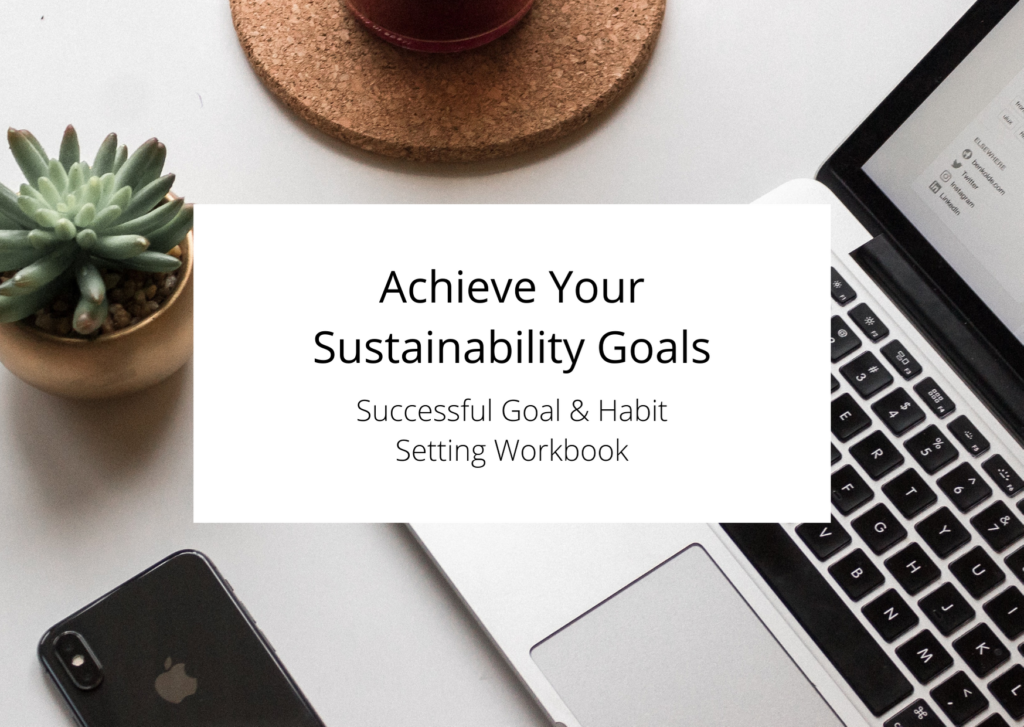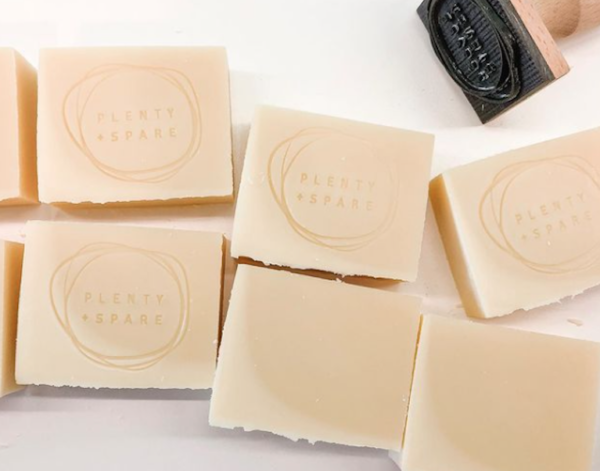Have you ever been overly excited about a goal only to ditch it a couple of weeks later because you didn’t know how to reach it or it seemed like too much work? Ever wonder why it’s so hard to incorporate your sustainability goals into your life or why they don’t stick?
Achieving our goals requires making changes to our current choices and building new habits. Whether it’s remembering to bring reusable shopping bags to the store, growing your own food or living by the principles of minimalism the process is the same. To achieve your goals, you need a plan and willpower to stick with them when the process gets overwhelming.
Define Your Top-Level Goal
Before setting a new goal, it’s important to understand what type of goal you’re defining, referred to as the goal pyramid.
A top-level goal is a 5-10 year “big” goal that is really important to you and sets the direction for you to follow, such as improving your financial situation, your career or growing your family. Mid-level goals are shorter-term goals that align with your top-level goal. Finally, low-level goals are the tasks you can start on right away to achieve your mid-level goals.
A goal is only as successful as your willingness to create the necessary changes required to achieve it, especially when you are tired and don’t have the time or money to stay on track. The power of understanding the value or purpose behind your goal will keep you motivated and moving forward when obstacles arise and quitting seems like the best option. The value of achieving your sustainability goals is similar to “why” you want to achieve your goal.
The why method is a simple tool that can help identify why you want to achieve the top-level goal you’ve set.
Start by writing down your top-level goal and use the why method to identify your core value or purpose for achieving it. Next, break down the top-level goal into mid-level goals (achieved within 1-2 years). Ensure your mid-level goals align with your top-level goal, and prioritize them based on the value they will provide in achieving your bigger goal. Proper prioritization of your mid-level goals is important in defining your low-level goals (which you will get started on first) and will help keep you focused.
Set Sustainability Goals You’ll Achieve
Make your goals powerful and improve your chances of success by using the following principles when you are defining them.
- Clarity: set specific goals to eliminate confusion and keep you focused
- Challenging: we are most motivated and accomplish more when we stretch our minds 4% beyond our capabilities
- Commitment: is required to ensure you will achieve the goals you set
- Feedback: informs on your progress allowing you to make adjustments to your action plan
- Task Complexity: set goals that align with the goal’s complexity
Create Habits That Align With Your Sustainability Goals
Incorporating new habits into our daily routine can be challenging, and there are many reasons we abandon them. Such as we’re not fully committed to changing our old habits, we get too busy, or the habit is a goal (and needs to be broken down).
Creating new habits takes time. On average it takes 66 days to form a new habit. Instead of expecting quick results, be patient and strive for incremental progress every day. Stay motivated by focusing on why the goal is important and who you need to become in order to achieve the goal. Too often we focus on the end result (what we want to achieve) instead of how we’re going to get there, which leads us to be impatient and lose motivation.
In his book, Atomic Habits, James Clear talks about BJ Fogg’s “habit stacking,” using our existing habits to cue the new habits we want to create. Using existing habits to cue new habits works well because we’ve already built the (subconscious) patterns and behaviours for the existing habit.
Habit Stacking: Build Habits to Achieve Your Sustainability Goals
When incorporating new habits into your routine, start with one at a time and build on from there. Use the habit stacking framework (cue, craving, response and reward) to make incorporating the new behaviour into your daily routine easier.
Cue (Trigger): Make it Obvious
The cue or trigger is a habit you’re already doing that will trigger you to think about your new habit.
To get started, think about your current daily routine. Where might it be easy to incorporate a new habit? Set a specific action to incorporate into your existing habit so that your response becomes obvious and second nature. It’s important to pick the right cue when deciding what habit to stack and identify potential tradeoffs (things/tasks) you’ll have to give up to incorporate the new habit.
For example: let’s say your new habit is to meditate first thing every morning for 30 minutes. If your normal routine involves making coffee when you first wake up, then you can set this as your cue or trigger to meditate.
Craving: Make it Attractive
Pair your new habit with an existing habit you want to do. This will help motivate you to build the new habit. Focus on what’s important and how to make your cue the most attractive and enticing.
For example, if you’re a coffee lover (like me), then the first thing you want in the morning is a cup of coffee. Pair your new habit with drinking a cup of coffee. The routine then becomes I will meditate for 30 minutes before I make a cup of coffee.
Response: Create Feedback Loops
Create a sustainable routine that works for you. Resist the urge to want immediate results. Instead, create your long-term habit with short-term feedback.
Commit to small amounts of time every day to achieve your new habit. The most effective way to achieve results is with consistency, repetition and measured progress in the moment. To keep on track, set aside time each week to reflect and revise your goal as needed.
For example, meditating for 30 minutes at once may seem daunting and hard to sit through. Instead, start with 5 minutes of meditation and increase the time each day or week until you reach 30 minutes.
Reward: Treat Yourself for your Efforts
Celebrate small wins with a reward to keep motivated. This might be a daily reward, like a cup of coffee after meditation. Set short, mid and long-term rewards for reaching your habit-building milestones.
For example, if your routine includes increasing your meditation time by 5 minutes every week, then when you’ve reached 10, 15 or 20-minutes of meditation practice, reward yourself with a treat.
Get Started
Setting vague or unclear goals will not get you to where you want to be. Be specific and set a clear plan for how you will integrate new habits. Plan how you will remove obstacles and ensure the effort you’re putting into your low-level goals will produce the most important results for achieving your mid-level goals.





